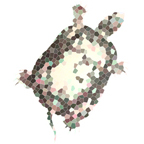 A Californian’s Guide to the Trees Among Us, by Matt Ritter, Heyday Books (www.heydaybooks.com), 2011, 192 pages, $18.95.
A Californian’s Guide to the Trees Among Us, by Matt Ritter, Heyday Books (www.heydaybooks.com), 2011, 192 pages, $18.95.
There’s something comforting to the title of author Matt Ritter’s A Californian’s Guide to the Trees Among Us that carries through into the pages of this new field guide tailored to the trees most people see everyday. From the kitchen nook with a mug of hot tea at hand, serenaded by the spring dawn chorus while walking the dog, or though the rain-spattered windshield on the commute to work, these are the trees that shade our homes, line our walks, and bear the weight of our rope swings.
With that in mind, Ritter has organized this new guide to city trees to suit the everyman and arborist alike. With more than 60,000 trees world-wide to chose from, Ritter instead narrowed his scope to focus on the 150-or-so most likely, and most often-encountered, urban and suburban tree species. The guide is set up to accommodate users with different skill sets. As a flip-style guide, the alphabetically arranged entries cater to those who know their way around the line-up of usual suspects that align their city streets, while the identification key eases users into a proper identification through primary characteristics for those who don’t know the difference between a plain ‘ol tree and a London plane tree.
Each entry includes a header that lists the species’ (or group of related species) Latin and common names (including etymology, pronunciation, and synonyms), tree shape/height, leaf form, flower type, and native range, followed by descriptive text that delves into its history and natural history. Throughout, Ritter helps define these trees through our shared pasts and present predicaments – that the blue gum Eucalyptus was introduced to California from Australia for lumber, that the olive was most likely the first non-native tree to be cultivated in California, or that massive valley oaks that once spread across the Central Valley have since been cleared to make way for agriculture.
To put the guide (and, let’s be honest, myself) to the test, I wandered into the backyard and plucked a branch off our maple tree to run it through the key. Pretending the specimen was new to science, I cracked open the key at 1./1′ and worked my way through: leaves usually < 8 inches long, not sword shaped; leaves simple; leaf veins netted → broad-leafed tree, not a palm; leaves arise from branches → leaf blades broad and flattened → leaves simple → leaves attached oppositely → leaves always opposite → leaves < 6 inches wide → leaves palmately veined → leaf not heart shaped, margin lobed and often with pointed teeth, fruit with two wings = Maples (Acer spp.). Success! Turning to page 24, a second key to California’s common cultivated maples presented itself. I set to work. This is probably as good a time as any to remind readers that botanist friends have more than once accused me of suffering from the green blur. So it was with little surprise that I had already alternatively keyed my maple out as first a big leaf maple (Acer macrophyllum) and next a sugar maple (A. saccharum) (What? An untapped source of free maple syrup!?!?!?!) before my wife walked into the office, overhead my dubious identification, and declared, “That’s a silver maple.”
“How do you know?” I challenged.
“The arborist told me,” she reminded me, recollecting our exploits last summer contracting a tree trimming service.
Who was I to argue?
Having successfully arrived at maple, I clearly should have rested on my laurels. As with so many things in life, a field guide is only as good as its user. For users like myself, A Californian’s Guide to the Trees Among Us will no doubt prove indispensable.
Green blurr indeed…

